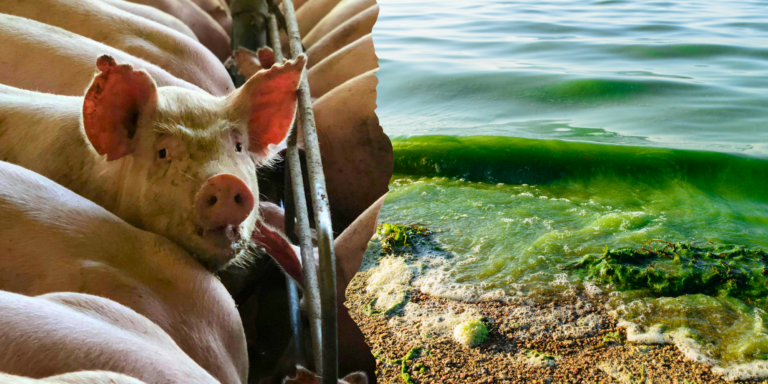Over 30 years ago, large factory style barns, used for raising pigs, started dotting the landscape across southern Manitoba. Not surprisingly, within just a few years, smelly and sometimes toxic blue-green algae blooms began to dominate Lake Winnipeg, and other southern Manitoba lakes. Was this just a coincidence? Not quite.

In these factory style barns, often thousands of pigs are kept confined together on slatted floors through which their urine and feces fall, collecting in pits underneath. Toxic fumes of hydrogen sulphide, methane, ammonia and carbon dioxide rise from these pits and are blown out into the neighbouring communities by large industrial fans. Should those fans fail, the fumes are so poisonous that the pigs will suffocate within a few hours.
These waste pits are routinely emptied into open lagoons near the barns, once again causing nauseating odours for neighbours. Those lagoons are then emptied twice a year when that liquid manure is either sprayed or injected into the soil on neighbouring fields to be used as fertilizer. The reason the manure is considered good fertilizer is that it contains phosphorus and nitrogen, both nutrients essential for growth of any plants.
So, what’s the problem?
Aside from subjecting animals to a life of misery and deprivation, there is simply too much manure to be safely applied each year. The excess phosphorus and nitrogen that is not taken up by whatever crop is grown, may run off during the spring melt, rainstorms, and floods. It then gets into streams, rivers and lakes including our beloved Lake Winnipeg.
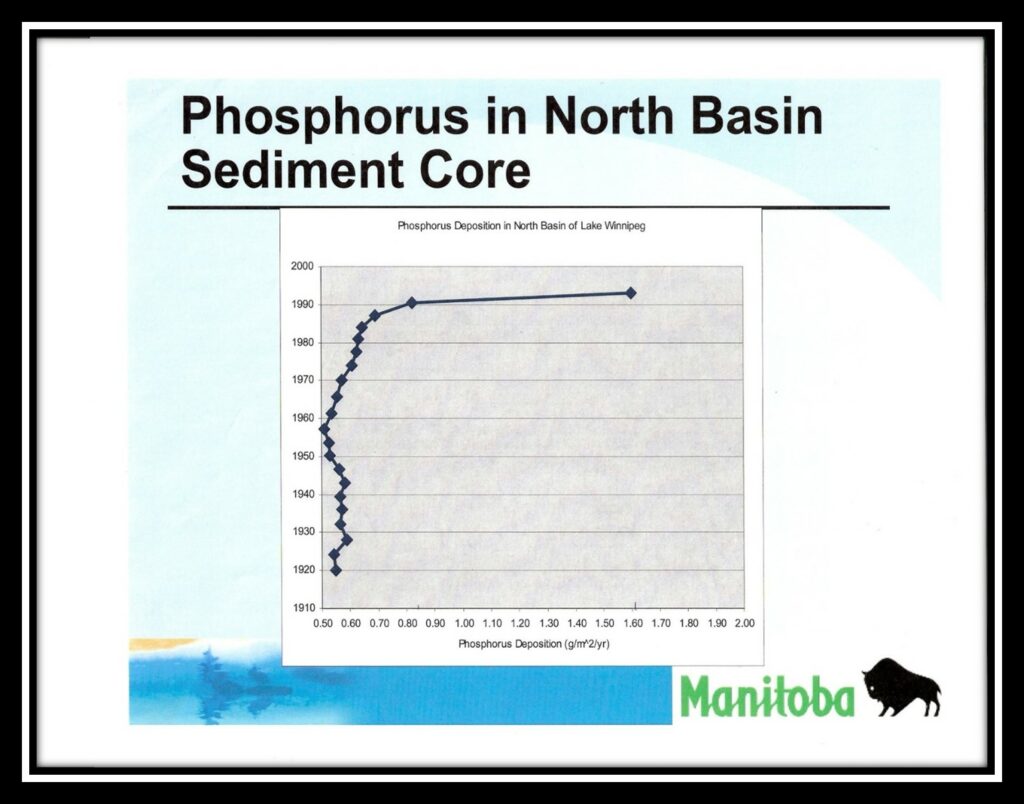
Phosphorus and nitrogen are the two main nutrients that feed blue-green algae. The amount of phosphorus getting into Lake Winnipeg has increased substantially since the 1990s and the algae blooms have matched that growth.
Did you know that government regulations in Manitoba allow for manure application at rates of five times what the crop can use in one year, as long as manure is not re-applied for five years? This assumes that the phosphorus and nitrogen will remain in that soil without moving all that time. But we know that during floods, rains, snowmelt these nutrients can run off and get into our waterways. Scientists who have measured where the phosphorus originates from, tell us that within Manitoba, 35% of phosphorus getting into Lake Winnipeg comes from agriculture, while only 12% comes from the city of Winnipeg.
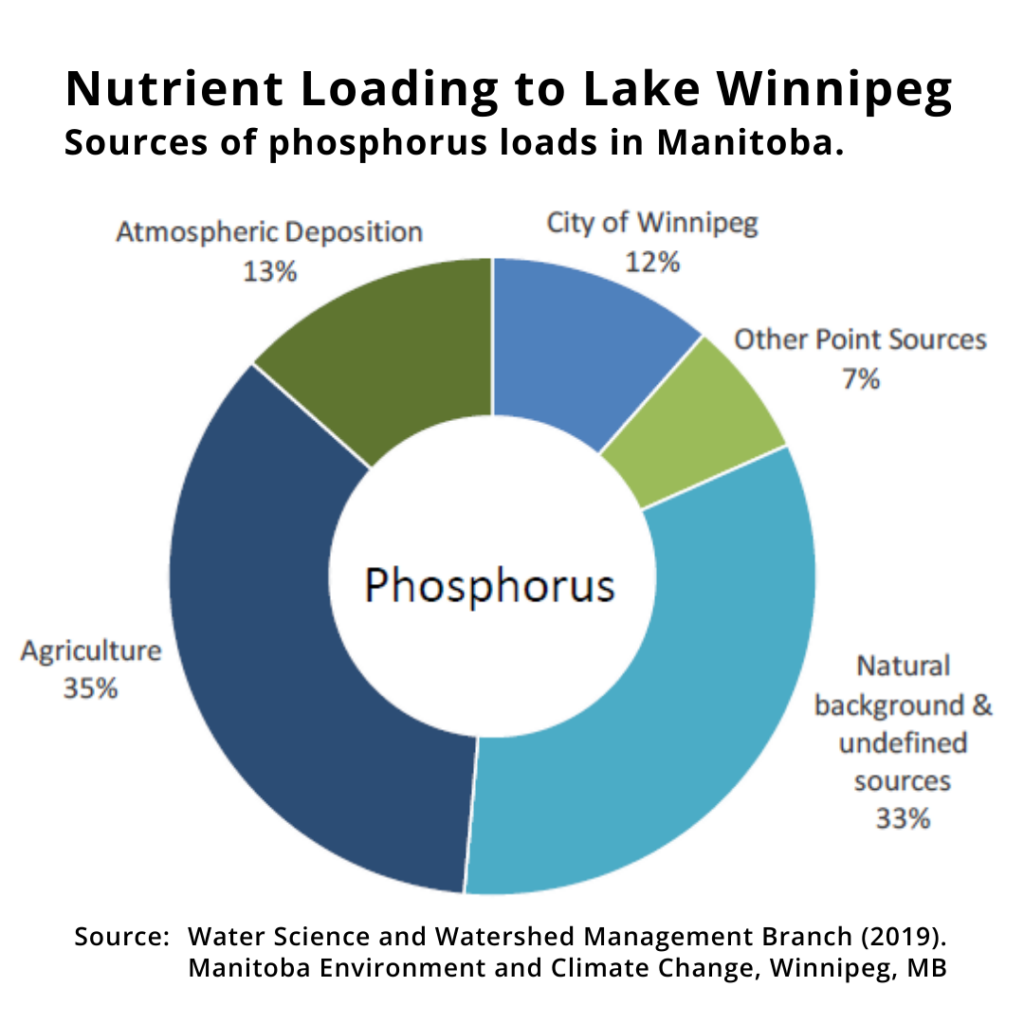
In 2007, the Clean Environment Commission issued a report on the sustainability of the hog industry in Manitoba, and one of the recommendations was that government review phosphorus application provisions of the Livestock Mortalities and Manure Management Regulation, after the regulation has been in place for five years. That review has never happened, and its now 17 years later. Why not?
Its no wonder that there is too much manure to be safely dealt with when you consider that in 1991 there were an average of 434 pigs per farm in Manitoba but that has now ballooned to an average of 5,563 according to Stats Canada.
AVERAGE NUMBER OF PIGS PER FARM

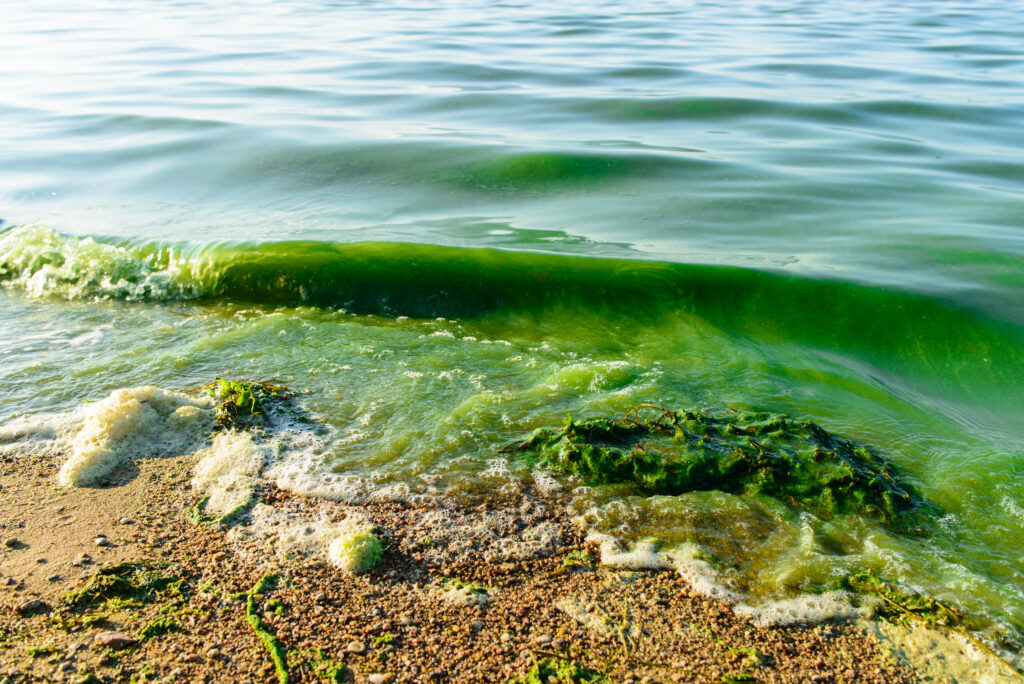
Green-blue algae blooms in lake.
So, what is Hog Watch Manitoba calling for?
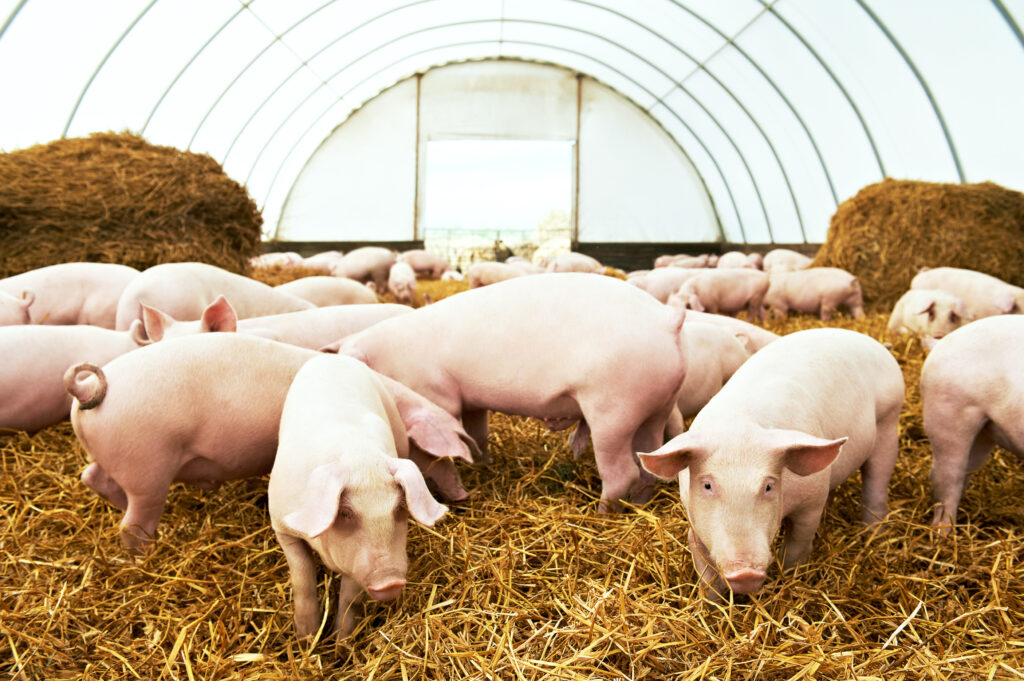
The phase out of factory style barns over the next five years to be replaced by the conventional way of raising pigs, on straw, with fewer numbers of animals per barn.
This includes:
- access to outdoors when weather is suitable,
- no routine antibiotics in feed
- amend the manure application regulations to reflect the agronomic benefit of recommended levels of phosphorus in soil.
- stop the subsidization of industrial hog facilities
- offer education and financial incentives to farmers who want to raise pigs on straw in conventional, more humane, environmentally sustainable ways.
The animals, farm staff, communities living near hog factories, and our lakes will all benefit. And Manitoba can finally be proud of leading the way from the ills of industrialized hog production to a more humane, ethical regenerative mode of raising pigs.

